What's New
Displaying results 2371 - 2380 of 4052
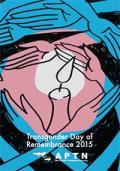
Resource | Tools,
In a climate of criminalisation, where law enforcement agencies themselves perpetrate violence with impunity, it is not surprising that violence against transgender people is underreported and inadequately investigated. In this region and globally, transgender organisations have attempted to monitor the most extreme forms of violence: when transgender people have been killed because of their gender identity. This violence remains invisible and unreported when States do not legislate against family violence and leave families to enforce social norms, standards of respectability, and morality.
The Asia Pacific Transgender Network has released a Transgender Day of Remembrance Media Toolkit and terminology resource to guide the media to a fair and inclusive coverage and reporting on transgender people.
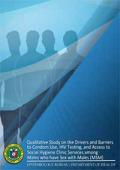
Resource | Publications,
This study focused on factors to condom use, HIV testing, and access to services among males who have sex with men (MSM) as a key affected population. To supplement the quantitative data derived from MSM respondents of the 2013 IHBSS, this study analyzed qualitative data derived from in-depth interviews with 105 MSM participants from the 21 cities of the 2013 IHBSS. The present study looked at condom use as the primary HIV prevention strategy among MSM and HIV testing as the primary link to HIV care and treatment among MSM. The objective of the present study was to understand the drivers and barriers to condom use among MSM and the drivers and barriers to HIV testing among MSM.
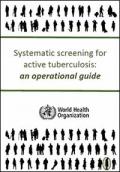
Resource | Guidelines,
More than one third of the 9 million people who fall ill with tuberculosis (TB) each year are not diagnosed, not notified, or do not start treatment. Many of those who do start treatment have a delayed start due to a range of challenges. Such obstacles to receive care can result in poor health outcomes for the affected individuals, catastrophic costs for their families and continued transmission of TB to others in their communities.
The WHO has published guidelines that set out the principles for screening for active TB and provide recommendations on prioritizing of risk groups and choosing a screening approach. Screening should not be done on a mass, indiscriminate scale because this is expensive, of relatively low benefit and can result in many false positive results. One of the key principles set out in the guidelines is that screening for TB needs to be properly targeted to high-risk groups and tailored to each specific situation, depending on the epidemiological, social and health-systems contexts.
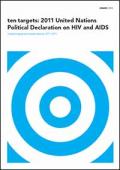
Resource | Publications,
In this report we review global progress made towards those 10 targets in advance of the critical milestone of the 2016 United Nations General Assembly High-Level Meeting on Ending AIDS and in the context of the target of ending AIDS by 2030 as part of the Sustainable Development Goals. This is an important opportunity to reflect on progress, but also to identify where gaps remain and to take action to ensure that no one is being left behind by the global AIDS response. The UNAIDS 2016–2021 Strategy aims to harness the momentum we have achieved to date. If we do not Fast-Track our efforts the number of new HIV infections and AIDS-related deaths will rebound. Investment in AIDS must not falter; in fact, in the short-term it needs to increase. Front-loading investment now will ultimately lead to greater impact and long-term cost-saving.
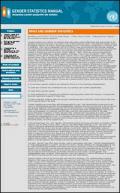
Resource | Tools,
The purpose of the present manual is to provide the methodological and analytical information necessary to improving the availability, quality and use of gender statistics in countries with less developed statistical systems. The approach and structure of the manual are based on the concept of gender mainstreaming in national statistics. Mainstreaming a gender perspective in statistics means ensuring that gender issues and gender-based biases are systematically taken into account, in the production of all official statistics and at all stages of data production. This strategic process ensures (a) that national statistical systems regularly collect, analyse and disseminate data that address relevant gender issues; (b) that gender-sensitive concepts and methods are used in data collection in all statistical fields; and (c) that the presentation and dissemination of gender statistics aim to reach a wide range of users, including policymakers, advocates, researchers and analysts whose primary concerns are not necessarily focused on gender.
Read Manual
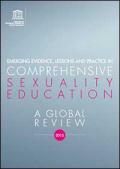
Resource | Publications,
This report provides an overview of the status of Comprehensive Sexuality Education (CSE) implementation and coverage on a global level, drawing on specific information about the status of CSE in 48 countries, generated through analysis of existing resources and studies. Best practice in terms of providing CSE continues to develop. The current report examines the evidence base for CSE and, through a series of case studies from every region, explores initiatives that are setting the standard and pioneering new practices in the delivery of CSE. It represents the first in a series of periodic reports that aims to monitor the global implementation of CSE.
Comprehensive life skills-based sexuality education helps young people to gain the knowledge and skills to make conscious, healthy and respectful choices about relationships and sexuality.
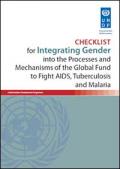
Resource | Guidelines,
This Checklist has been developed to strengthen the attention paid to gender in the implementation of programmes supported by the Global Fund to Fight AIDS, Tuberculosis and Malaria (Global Fund), through the processes and mechanisms of the Global Fund’s Funding Model. Each stage of the Funding Model requires specific actions to address the gender dimensions of HIV in the development and implementation of grants. The Checklist sets out specific steps and examples to support these gender integration efforts throughout Global Fund programming.
While this Checklist highlights the country dialogue process as the main opportunity, the national strategic plans (NSPs) for HIV, TB and malaria are also vital components. The more that gender-transformative programming is integrated into the NSPs, the more eff ectively it can be integrated into the Global Fund process.
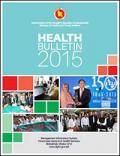
Resource | Publications,
This publication primarily intends to highlight the activities and healthcare situation in Bangladesh during 2014 but, based on availability, 2015 data are also included in some cases.
2015 is a year of great significance in terms of newer public health visions, both for Bangladesh and other Member States of the United Nations. The UN Millennium Development Goals (MDGs) will conclude this December, and we will have to confront the challenges of the newly-set Sustainable Development Goals, abbreviated as SDGs. Health Bulletin 2015 makes specific mention of this transition, in relevant chapters. Our experiences with the MDGs will guide us in our pursuit of addressing the new challenges in the coming SDGs.
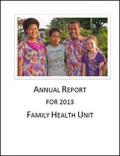
Resource | Publications,
The year 2013 was a year of great achievement in regards to scaling up programs, strengthening and advocating for more support in certain areas of Family Health. The year was strengthened for the Unit with the edge of Monitoring and Evaluation added to the Unit as a strong pillar which added to the Unit a proper planning process.
There were lessons learnt in 2013 that would help improve 2014, some of these include proper planning with partners for implementation of programs though an important component for the whole unit was to secure staffing for the various programs under Family Health to ensure smooth roll out and closer follow up by project officers, such as Child health and Reproductive Health.
Family Health is committed to make a difference in the areas of Family Health for the people of Fiji.
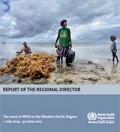
Resource | Publications,
Member States in the WHO Western Pacific Region made significant gains over the past year in improving health outcomes and strengthening health systems. Communicable disease morbidity and mortality continued to decline, and noncommunicable diseases and their risk factors were more effectively addressed. Real progress occurred in the move towards universal health coverage, and the Region is now better equipped to handle threats posed by emerging infectious diseases, emergencies and disasters.
WHO reforms continued to focus on tailoring support to the specific needs and priorities of the 37 countries and areas that make up the Western Pacific Region. Often that meant going beyond traditional global and regional approaches to develop more localized initiatives.
WHO’s work, however, is far from complete. More needs to be done in fighting difficult diseases such as malaria and tuberculosis, as well as neglected tropical diseases. We must strengthen preparedness and better mitigate the risks associated with emergencies and disasters. Recent challenges, including the health impacts of climate change, also must be addressed if we are to achieve even better health outcomes.
This brief summary of achievements and challenges serves as an introduction to the work of WHO in the Western Pacific Region for the year that ended on 30 June 2015.





